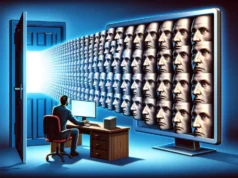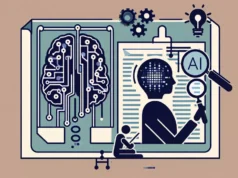In the fast-paced, ever-evolving world of digital technology, individuals and corporations alike are navigating a tumultuous landscape of creativity and copyright legislation. The ascendancy of the internet has transformed the way we create, share, and consume content, prompting an urgent and ongoing reassessment of how intellectual property laws apply in the digital sphere.
Renowned American lawyer, Lawrence Lessig, once stated that “the Internet has revived the read-write culture that copyright law was invented to support.” Yet, the transformation that allowed the digital native generation to become creators rather than just consumers has also tested the bounds of copyright law in ways unimaginable in the pre-internet era.
Rapid technological advancements have resulted in a constant crossfire of legal battles and ethical dilemmas pitting traditional views of copyright against the democratized creativity borne of the digital age. The cultural shift toward open-source software, fan fiction, multimedia artistry, and collaborative creation challenges the conventional boundaries of intellectual property rights, exposing the growing need for a legal framework flexible enough to accommodate this dynamic new context.
The manifestation of copyright in the digital age is an intensely contested terrain, rife with ongoing lawsuits that push the boundaries of existing legislation. Tech giants like Google and Amazon have long been embroiled in disputes regarding their digitization of books, and music services like Spotify and Apple Music continue to grapple with the complex intricacies of music licensing.
The concept of ‘fair use’, a legal doctrine that permits limited use of copyrighted material without obtaining permission, has found itself at the center of these debates. While intended to promote freedom of expression and creative innovation, the understanding and application of ‘fair use’ can often be nebulous and subjective.
For instance, the rise of User Generated Content (UGC) platforms such as YouTube has given birth to a vibrant ecosystem of content creators whose works often incorporate copyrighted materials. Aiding in the creation of memes, remixes, commentary videos, and more, the platform has found itself engaged in constant battles around what constitutes ‘fair use.’ The infamous case of Lenz v. Universal Music Corp, where the music company attempted to take down a video of a child dancing to a song by Prince, sparked widespread discussion around the ‘overreach’ of copyright protections and the need for an inclusive understanding of fair use.
However, it is essential to recognize the rationale behind copyright laws: to protect and incentivize creators. While the digital age amplifies the avenues for expression and creativity, it also escalates the potential for exploitation. Illegal downloading, content copying, and outright plagiarism have become easier than ever in the internet era, undermining the effort and creativity of artists, authors, and creators of various stripes.
The appropriation of works without credit or compensation strips creators of their inherent rights and threatens the vibrancy of the creative economy. It’s within this context that the European Union’s controversial Article 13, dubbed ‘the meme ban’, arises. While criticized for potentially stifling online humor, the underlying intention of the law was to secure fair compensation for creators whose works were being utilized extensively without adequate attribution or payment.
Striking a balance between safeguarding the rights of creators and nurturing the inclusiveness that fuels digital-age creativity remains a daunting challenge, facing pushback from both corporate powerhouses and public sentiment.
In this chaotic dance between creativity and copyright, it is evident that a one-size-fits-all approach falls short. An intelligent, adaptive approach is critical – one that acknowledges the value of shared culture while respecting the labor and innovation of individual creators.
Learning from grassroots initiatives like Creative Commons, which offers a more flexible spectrum of rights to creators, or the ‘copyleft’ movement that encourages the reuse and modification of works under specific conditions, may pave the way to a more nuanced, balanced, and inclusive system. These movements represent an innovative step towards resolving the contradiction between the inherently shared nature of digital creations and the need for just compensation and recognition for creators.
To navigate this labyrinth of copyright and creativity, a recalibration of traditional copyright laws for the digital age is needed. By fostering an ongoing dialogue among policymakers, artists, tech-companies, and users, we may yet find our way towards a digital ecology that is both fair and inspiring. Meanwhile, as users and creators, our responsibility is to strive for a conscious and considerate use of digital resources, promoting a culture of respect for innovation and creation, regardless of the medium.
Sources:
1. Lessig, L. (2004). Free Culture: How Big Media Uses Technology and the Law to Lock Down Culture and Control Creativity. New York: Penguin Press.
2. U.S. Court of Appeals for the Ninth Circuit. (2015). Stephanie Lenz v. Universal Music Corp., Universal Music Publishing, Inc., and Universal Music Publishing Group.
3. European Parliament. (2019). Directive on copyright and related rights in the Digital Single Market and amending Directives 96/9/EC and 2001/29/EC.
4. Creative Commons. (n.d.). About The Licenses.
5. Copyleft. (n.d.). Copyleft vs. Copyright. A Marxist critique.






